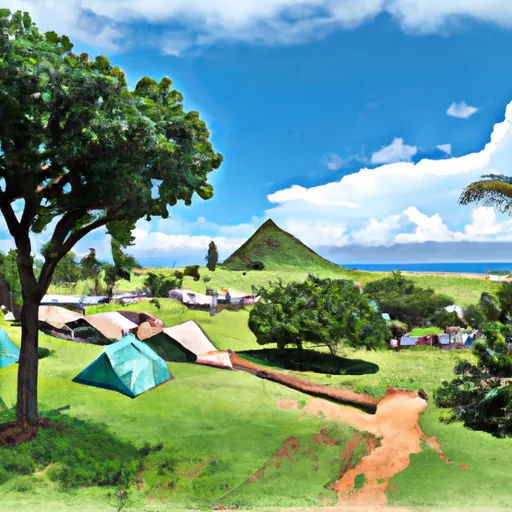Summary
The climate in this area is classified as tropical, with warm temperatures throughout the year. The average high temperature ranges from 80°F (27°C) in winter to 87°F (31°C) in summer, while the average low temperature varies from 66°F (19°C) in winter to 73°F (23°C) in summer. Precipitation is abundant, with an average annual rainfall of 49 inches, primarily occurring from November to March.
The hydrology constituents of Kaneohe Bay are diverse and include coral reefs, seagrass beds, and several fish species. The bay is also home to endangered Hawaiian green sea turtles and various marine mammals.
Outdoor recreation opportunities at M-C-B-H Kaneohe Bay are plentiful. The base offers various water activities, including swimming, snorkeling, scuba diving, and kayaking, allowing visitors to explore the vibrant marine life. Additionally, the base has well-maintained hiking trails that provide opportunities for scenic walks and beautiful views. Golf enthusiasts can also enjoy the Klipper Golf Course, an 18-hole course with stunning ocean vistas. Overall, M-C-B-H Kaneohe Bay offers a picturesque setting with a wide range of outdoor activities for visitors to enjoy.
Weather Forecast
M-C-B-H-Kaneohe-Bay receives approximately mm of rain per year, with humidity levels near 74% and air temperatures averaging around °C. M-C-B-H-Kaneohe-Bay has a plant hardyness factor of , meaning plants and agriculture in this region thrive during a short period during spring and early summer. Most plants will die off during the colder winter months.
Area Campgrounds
| Location | Reservations | Toilets |
|---|---|---|
 Bellows Field Beach Park - Oahu
Bellows Field Beach Park - Oahu
|
||
 Waimanalo beach park
Waimanalo beach park
|
||
 Keaiwa Heiau State Rec Area - Oahu
Keaiwa Heiau State Rec Area - Oahu
|
||
 Kahana Valley State Park - Oahu
Kahana Valley State Park - Oahu
|
||
 Kahana campground
Kahana campground
|

 Kaneohe Beach Park
Kaneohe Beach Park
 Kailua Beach Park
Kailua Beach Park
 Kailua Field
Kailua Field
 Kaelepulu Playground
Kaelepulu Playground
 Kaluapuhi Neighborhood Park
Kaluapuhi Neighborhood Park